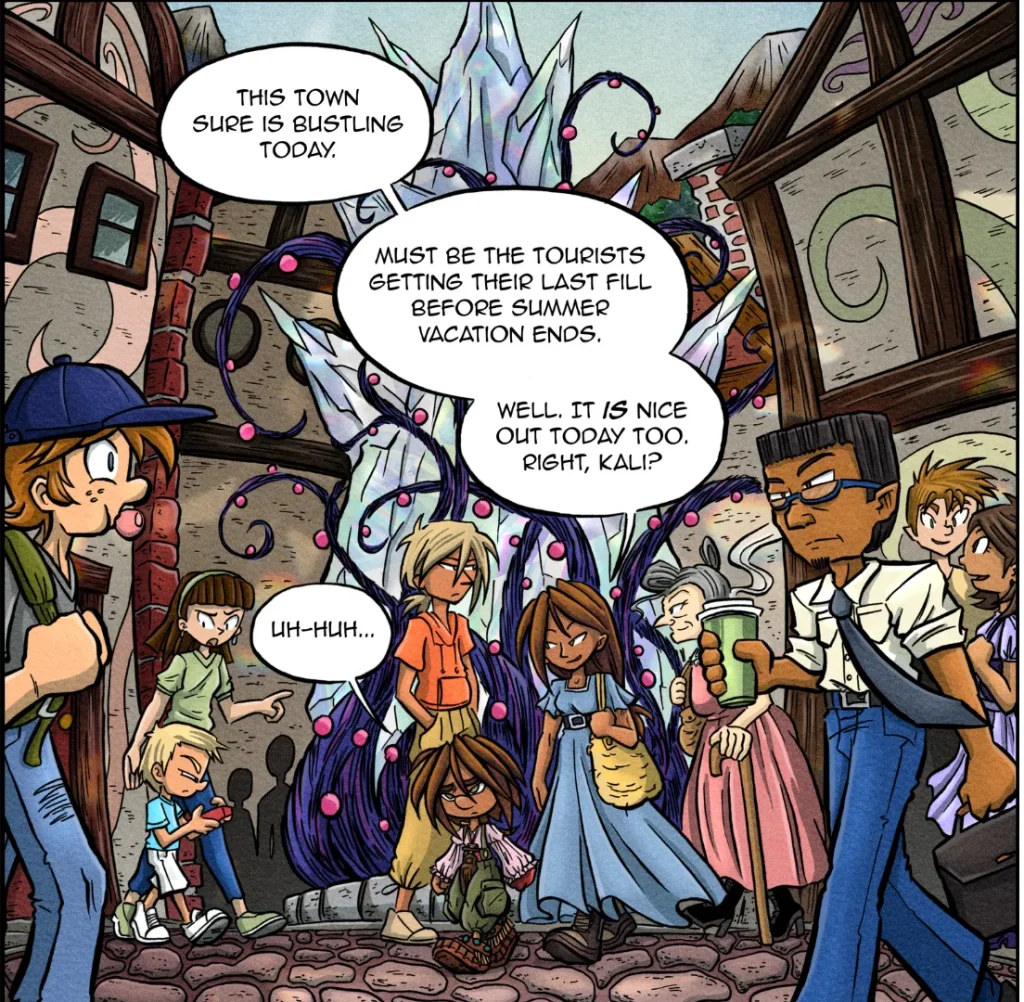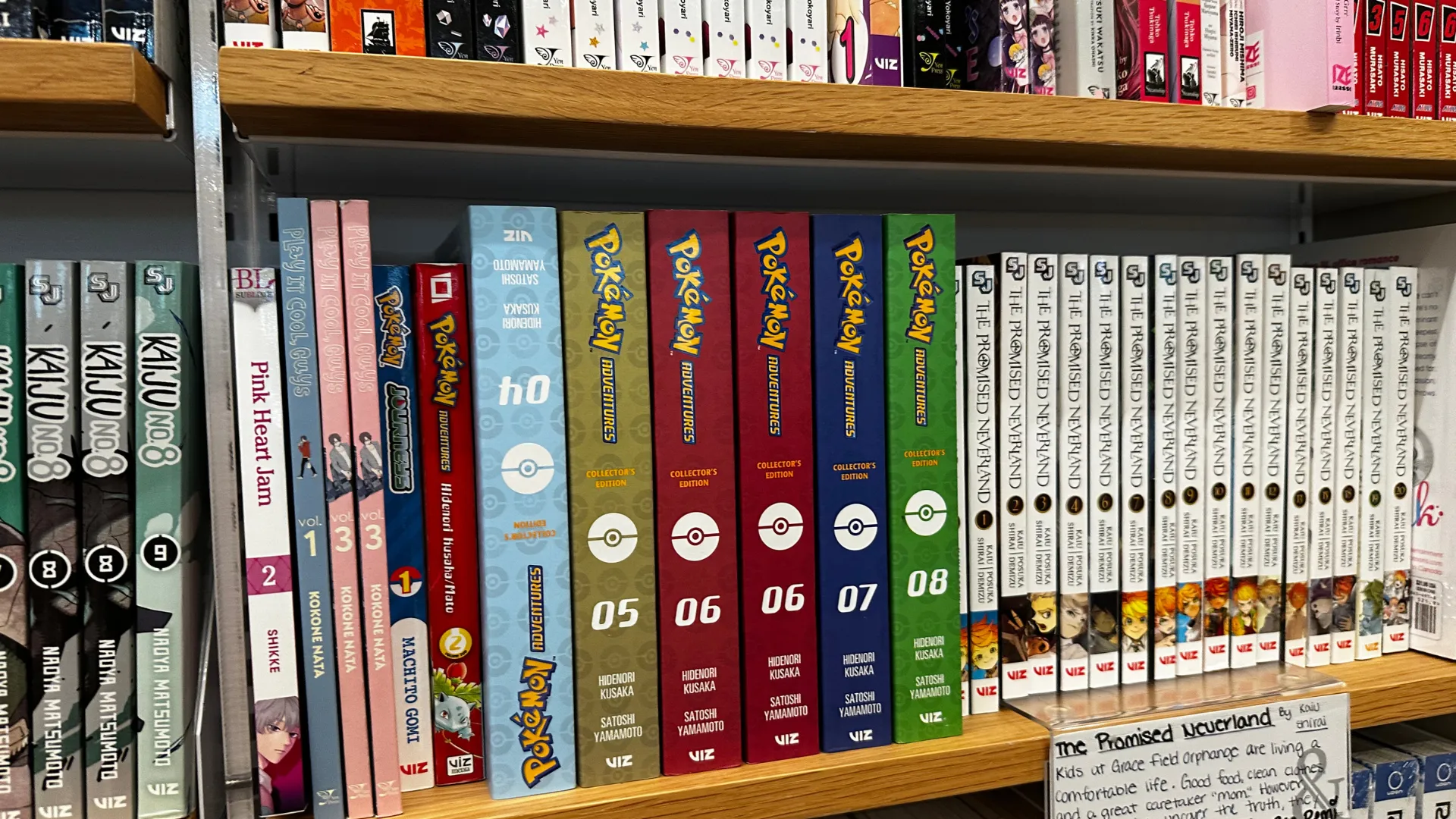1. Manga Appeals to a Wide Range of Audiences
One of the most significant factors contributing to manga’s popularity among young Americans is its broad appeal. Manga spans various genres, from action-packed stories to slice-of-life tales, historical dramas, and fantasy. Unlike the American comics industry, which has long been dominated by superheroes, manga offers a diverse range of stories that cater to different tastes, ages, and interests.
For example, while superhero comics like Spider-Man or Batman remain popular, many young readers may not find these stories relatable or engaging after a certain point. Manga, however, presents a wide array of genres like shonen (targeted at young boys), shojo (targeted at young girls), seinen (for older male readers), and josei (for older female readers). This diversity allows young readers to find stories that resonate with their interests, whether they enjoy action, romance, fantasy, or drama.

2. Relatable Characters and Realistic Themes
Another reason manga has overtaken American comics in popularity is the relatability of its characters and themes. Manga often focuses on the inner struggles of its characters—emotional growth, personal identity, friendships, and overcoming adversity—topics that are deeply relatable for young readers. While superhero comics tend to focus on larger-than-life heroes saving the world, manga frequently delves into the everyday lives of ordinary people.
Many young readers find themselves connecting with characters in manga who deal with struggles such as fitting in at school, overcoming personal challenges, or discovering their own potential. Whether it’s the story of a young boy in Naruto striving to prove his worth or a girl in Fruits Basket dealing with her family’s secrets, manga often explores themes of family, friendship, and self-discovery, which can feel more grounded and accessible than the grandiose plots of superhero comics.
3. The Art Style: A Key Factor in Manga’s Appeal
The art style in manga is another pivotal reason why young Americans are gravitating toward it. Manga’s distinct black-and-white art style is often praised for its intricate detail and expressive emotion. The focus on close-up facial expressions, dynamic action sequences, and symbolic use of visual elements (such as sweat drops, speed lines, or sparkles) conveys emotion and atmosphere in ways that feel immediate and visceral.
In contrast, American comics have traditionally focused on colorful, highly stylized, and often exaggerated characters, which may not resonate with all readers, especially those who are looking for a more personal or grounded artistic style. Manga, by contrast, offers a sense of intimacy through its art. Readers can experience the characters’ emotions and thoughts in a way that feels deeply personal. The expressive art style is often a huge draw for younger readers who may be used to anime and video games, which share a similar aesthetic.
4. The Manga Format: A More Accessible Reading Experience
For many young readers, the format of manga is another reason it feels more accessible than American comics. Manga is typically read in its original Japanese format, meaning it’s read from right to left. This small shift can provide a refreshing change for those who are already accustomed to reading English books, which are written from left to right. But more importantly, the format of manga is often better suited to today’s younger readers, who tend to be more accustomed to digital platforms.
Manga volumes are typically released as graphic novels, with multiple chapters compiled into a single book. This format allows readers to experience an entire arc of a story without needing to follow fragmented issues or multiple series, which is a more common practice in American comics. The graphic novel format also appeals to readers who enjoy binge-reading, allowing them to immerse themselves in a story for hours at a time. This is particularly attractive to young readers who may not be as invested in the collecting culture of American comics, which often require readers to follow complex continuity across multiple titles.
5. Manga's Digital Accessibility
The digital age has significantly transformed how young Americans consume media, and manga has found a unique way to leverage this trend. With the rise of digital manga platforms such as Shonen Jump, VIZ Media, and Crunchyroll, it’s easier than ever for young readers to access their favorite manga titles on their smartphones, tablets, or computers. Many of these platforms offer free or affordable access to manga, making it more accessible than ever.
In contrast, American comics, though available digitally through platforms like ComiXology, still primarily rely on physical comic book stores or subscriptions to services like Marvel Unlimited or DC Universe Infinite. While these services are convenient, they don’t have the same widespread availability or the same digital-first culture that manga platforms have fostered. Manga’s ease of access online, often with updates released regularly, aligns with the fast-paced, tech-savvy lifestyle of younger generations.
6. The Influence of Anime
Another significant reason for manga’s rise in popularity is the symbiotic relationship between manga and anime. Many young Americans first encounter manga through anime adaptations. Popular anime series like My Hero Academia, Attack on Titan, and Demon Slayer have sparked widespread interest in their original manga counterparts. The anime adaptations act as gateways to the world of manga, and once viewers fall in love with the animated version of a story, they often seek out the manga to continue the journey beyond the show’s episodes.
The appeal of anime and manga is especially strong in younger generations who grew up watching anime on television or streaming platforms. This familiarity with anime naturally leads them to explore the manga that inspired these animated series. This connection has created a loyal fanbase that continues to support both mediums, with many anime fans becoming avid manga readers.

Conclusion
Manga has become the dominant form of graphic storytelling among young Americans, offering an accessible, diverse, and relatable alternative to traditional American comics. Its broad appeal across genres, relatable characters, intricate art, accessible format, and digital presence all contribute to its rising popularity. As the world of manga continues to evolve, it will undoubtedly remain a central influence in the graphic novel and children’s reading scene.
For fans of exciting, imaginative stories, The Mannamong is a perfect example of the kind of engaging narrative that captures the spirit of graphic novels. With its rich world-building and dynamic characters, The Mannamong is a series that appeals to young readers interested in both fantasy and deep emotional journeys. Visit The Mannamong website to explore the books and discover why this series could be the next favorite among young readers who love graphic novels and stories of adventure, growth, and magic!







